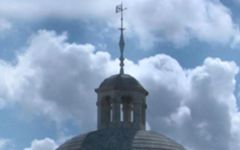Les Forts de Latour 2006
-
Robert
Parker -
Wine &
Spirits -
Wine
Enthusiast



Product Details
Your Rating
Somm Note
Winemaker Notes
This wine has lovely intense red color with complex and elegant nose of ripe fruits. The mouth is dense and tannins are coated. The wine is racy with great power and a wonderful liveliness. This wine is a blend of 62% Cabernet Sauvignon 38% Merlot.
Professional Ratings
-
Robert Parker's Wine Advocate
The brilliant second wine, the 2006 Les Forts de Latour, a blend of 70% Cabernet Sauvignon and 30% Merlot, possesses a dense ruby/purple color, a beautiful bouquet of asphalt, cassis, cedar, truffles, and earth, and a full-bodied, dense, beautiful style that is similar to a 1996 Pauillac. It will age effortlessly for 15 years.
-
Wine & Spirits
At first this seems like a classical claret, showing ripe currant and strawberry flavors over a firm, earthy swath of tannin. The tension in the tannin only builds with air, the tannin itself seeming to increase in density as it turns from firm to crushing. Severe and powerful as a young wine, this will mellow with a decade in the cellar.
-
Wine Enthusiast
Les Forts de Latour is at the level of some of the Médoc classed growths. This 2006 is wonderfully juicy with ripe fruit that floats above the dry structure. It is the freshness combined with that generous fruit that is so outstanding here. A great wine for drinking after 3–4 years.
Other Vintages
2017-
James
Suckling -
Robert
Parker -
Wine
Enthusiast -
Wine
Spectator -
Jeb
Dunnuck - Decanter
-
James
Suckling -
Wine
Enthusiast - Vinous
- Decanter
-
Robert
Parker -
Jeb
Dunnuck -
Wine
Spectator
-
Wine
Enthusiast -
James
Suckling -
Robert
Parker -
Wine
Spectator
-
Jeb
Dunnuck -
Robert
Parker -
James
Suckling - Decanter
-
Wine
Spectator
-
Wine
Enthusiast -
Wine
Spectator -
Robert
Parker -
James
Suckling
-
James
Suckling -
Wine
Spectator -
Wine
Enthusiast -
Robert
Parker
-
James
Suckling -
Wine
Enthusiast -
Robert
Parker -
Wine
Spectator
-
Wine
Enthusiast -
James
Suckling -
Robert
Parker -
Wine
Spectator
-
Wine
Spectator -
James
Suckling -
Robert
Parker -
Wine
Enthusiast -
Wine &
Spirits
-
Wine
Spectator -
James
Suckling -
Robert
Parker
-
Robert
Parker
-
James
Suckling -
Wine
Spectator -
Robert
Parker
-
Robert
Parker
-
Robert
Parker
-
Robert
Parker -
Wine
Spectator



One of the world’s most classic and popular styles of red wine, Bordeaux-inspired blends have spread from their homeland in France to nearly every corner of the New World. Typically based on either Cabernet Sauvignon or Merlot and supported by Cabernet Franc, Malbec and Petit Verdot, the best of these are densely hued, fragrant, full of fruit and boast a structure that begs for cellar time. Somm Secret—Blends from Bordeaux are generally earthier compared to those from the New World, which tend to be fruit-dominant.

The leader on the Left Bank in number of first growth classified producers within its boundaries, Pauillac has more than any of the other appellations, at three of the five. Chateau Lafite Rothschild and Mouton Rothschild border St. Estephe on its northern end and Chateau Latour is at Pauillac’s southern end, bordering St. Julien.
While the first growths are certainly some of the better producers of the Left Bank, today they often compete with some of the “lower ranked” producers (second, third, fourth, fifth growth) in quality and value. The Left Bank of Bordeaux subscribes to an arguably outdated method of classification that goes back to 1855. The finest chateaux in that year were judged on the basis of reputation and trading price; changes in rank since then have been miniscule at best. Today producers such as Chateau Pontet-Canet, Chateau Grand Puy-Lacoste, Chateau Lynch-Bages, among others (all fifth growth) offer some of the most outstanding wines in all of Bordeaux.
Defining characteristics of fine wines from Pauillac (i.e. Cabernet-based Bordeaux Blends) include inky and juicy blackcurrant, cedar or cigar box and plush or chalky tannins.
Layers of gravel in the Pauillac region are key to its wines’ character and quality. The layers offer excellent drainage in the relatively flat topography of the region allowing water to run off into “jalles” or streams, which subsequently flow off into the Gironde.
